Doorway Heaven: Tunisia
Hello, fellow adventurers!
I'm back at it having just returned from another incredible adventure to Tunisia, which is considered North Africa's most liberal and stable nation. Once under the Carthaginian Empire (later under the Roman, Arab, Ottoman, and French rule), film enthusiasts might know Tunisia from Star Wars today: several iconic scenes were filmed in Matmata, where the desert serves as a backdrop for Luke Skywalker's home planet, Tatooine. Bordered by the Mediterranean Sea to the north and east, 98% of the population is Arab Berber with Europeans and Jews making up the remaining 2% of the population.
My journey began in Tunis, the capital of Tunisia. I arrived in the early evening and was driven about an hour up a hilly, windy, road to my hotel perched on the cliffs of Sidi Bou Said. Wide enough for only one car, the end of the drive was a bit harrowing at night and required a bit of continual reversing between drivers going opposing ways. I checked into my guest house and made my way to my room, adorned with Tunisian blue tiles and high domed ceilings.
 |
| My hotel in Sidi Bou Said. |
 |
| The room had beautiful domed ceilings. |
 |
| The bathroom had blue and white tiles, on theme with the rest of the property. |
To my pleasant surprise, stuffed dates were waiting in my room.
 |
| They were delicious, but not as good as Algeria! |
After quickly dropping my bags, I sat down for dinner in the hotel's restaurant where I eagerly ordered "brik" — something I loved while in Algeria. The brik in Tunisia is different, shaped in a triangle instead of an egg roll shape and with a runny egg in the middle. Stuffed with fresh tuna and an egg, this was one of the best appetizers I've had!
 |
| Tunisian brik. |
I had asked my waiter which main dish was authentically Tunisian, and he recommended the seafood cumin stew, complete with prawns, scallops, and calamari. Local to this region specifically, it was indeed delicious though, like Algeria, the portion was way too large for one person!
 |
| Seafood cumin stew. |
I capped off my night with mint tea which, no matter how hard I try, always tastes one thousand times better in North Africa than it does when I make it at home in Los Angeles.
 |
| Tunisian mint tea. |
The following morning, I rose early to have breakfast on the patio overlooking the Mediterranean. The second I stepped out through the double glass doors, my jaw dropped. Hearing the birds chirping and watching the fishermen out at sea while I sipped my double shot cappuccino and fresh squeezed strawberry juice made for a peaceful start to my otherwise jam-packed day. I was here for work, after all!
 |
| Breakfast view. |
I began the day with a visit to the city of Carthage. Founded by the Phoenicians in the 9th century B.C., the ancient city of Carthage is an extensive archaeological site, located on a hill above the Gulf of Tunis and the surrounding plain. Carthage’s strategic location on the North African coast made it a vital hub for maritime trade. The city's merchants controlled key shipping routes and had strong economic ties with regions like North Africa, Sicily, Spain, and the Mediterranean islands. Carthage became famous for its wealth, skilled shipbuilding, and impressive fleet of warships. The history of Carthage is also deeply intertwined with its rivalry with Rome. This rivalry led to the famous Punic Wars, a series of three wars fought between Carthage and Rome from 264 BCE to 146 BCE. Today, the ruins of ancient Carthage are an incredibly important archaeological site and a UNESCO World Heritage Site.
I first visited the Tophet, the most famous—or infamous—site for being associated with child sacrifice. Greek and Roman writers like Diodorus Siculus, Plutarch, and Tertullian claimed the Carthaginians sacrificed children to their gods, especially Baal Hammon and Tanit. Others argue these were cemeteries for infants who died naturally, especially given high infant mortality at the time. Whatever the case, excavations have uncovered thousands of urns with cremated remains of infants, young children, and animals. Photos are below.
From there, I walked to the Punic Port of Carthage, one of the most advanced harbors in the ancient world. Carthage had a dual-port system: a commercial harbor for merchant ships and trade and a military harbor which was highly fortified and used exclusively by the Carthaginian navy. I also visited the Antonine Baths (public Roman baths also known as "thermae") built during the reign of Emperor Antoninus Pius. Constructed on the site of destroyed Punic Carthage, the thermae was a whole wellness and social compex with a cold room, a warm room, a hot room, an open courtyard for exercise, libraries, lounges, and gardens. Not a whole lot remains, so it's easy to visit the site in an hour or less. Pics below!
 |
| One of the houses with a wall mosaic in tact. |
 |
| View of the Antonin baths with the sea behind. |
 |
| Layout of the Antonin Baths. |
 |
| Entering the Antonin Baths. |
After exploring the UNESCO complex, I visited the Zaghouan Aqueduct, an impressive Roman engineering marvel built in the 2nd century AD during the reign of emperor Hadrian. Built to transport fresh spring water form the Zaghouan mountain range, it features a mix of underground channels and towering arches.
 |
| Bridge over the aqueducts. |
 |
| Top view of the aqueducts. |
 |
| The inside of one of the aqueducts. The circles are holes in the top that slaves used to descend down to clean the sediment from the aqueduct once per year. |
From Carthage, my guide and I proceeded to modern day Tunis, walking down the famed Avenue Habib Bourguiba, a wide tree-lined street made famous by the scenes of the Jasmine Revolution protest.
 |
| Walking towards the medina. |
 |
| Cathedral of St. Vincent de Paul. |
 |
| I had to take one tourist photo! |
 |
| Kasbah Square. |
At the end of the avenue, we turned left to visit the Tunis Central Market, offering a glimpse of local life. Also known as the Marché Central, it's a bustling hub of daily life offering a vibrant mix of fresh produce, spices, seafood, meats, and local delicacies. Photos from the Central Market are below.
From there, we snaked our way through the narrow, winding alleyways of the Tunis Medina, stopping for a local sandwich for a quick bite.
 |
| The entrance to the Tunis medina. |
Dating back to the 7th century, the UNESCO World Heritage Site is home to historic mosques, palaces, and madrasas that reflect centuries of cultural and religious influence. Unfortunately on this visit, it was difficult to take photos as I was literally shoulder-to-shoulder with people. While people didn't really shove, you definitely had to keep up with the "flow of traffic"!
 |
| Minaret of the Ez-Zitouna Mosque. |
 |
| The pathway leading to the hotel I later stayed at. |
 |
| More doorways! |
After nearly getting lost in the crowd, we visited the Bardo Museum, a medieval palace rebuilt by the Muradid and then Husaynid beys between the 17th and 19th centuries, which houses many of the mosaics from Tunisia’s most famous Roman sites.
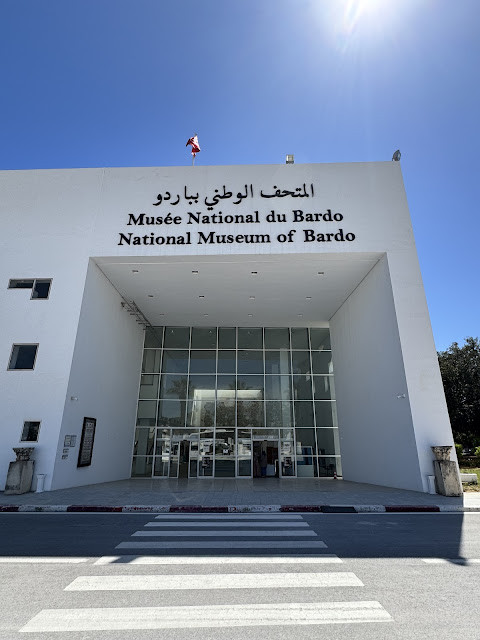 |
| Entrance to the Bardo Museum. |
The Bardo also contains a small Islamic section, but its most interesting feature is the eclectic combination of Islamic and Italianate elements, evident in the designs on the painted coffered wood ceilings; the juxtaposition of European-style halls and Arab-Islamic domed chambers; and the incongruous addition of chandeliers, a common feature in 18th and 19th century Turco-Tunisian decor. Below are some photos.
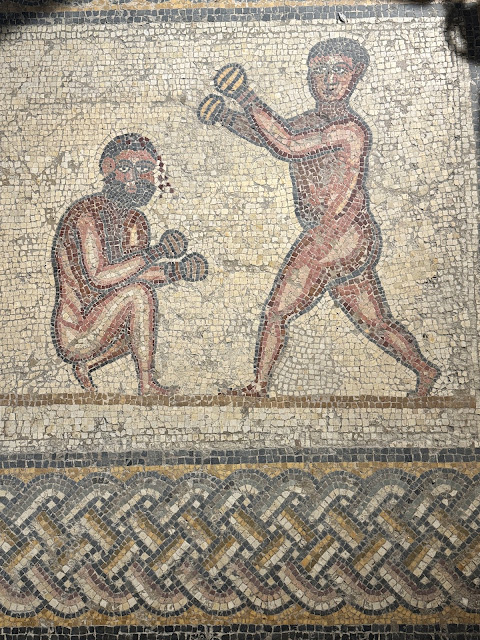 |
| This boxing scene was almost perfectly in tact. |
 |
| Tunisian torah. |
 |
| I loved all the ceiling detail! |
 |
| This mosaic is special because it's one where we can see writing on the paper, which is unusual. |
By the time we had explored the Bardo for nearly two hours, jet lag had struck and I returned to Sidi Bou Said for some time at leisure. I tried bambalouni ("bomb-bah-loh-nee"), a popular and traditional Tunisian sweet street food especially well known in Sidi Bou Said.
 |
| Bambalouni in Sidi Bou Said. |
A type of fried dough (similar to a donut), they are made with simple ingredients and are dusted with sugar (the word bambaloni actually comes from a similar Italian word that means “donut”). Not only is this one of Tunisia’s best desserts, it is also incredibly affordable, usually costing about 1 Tunisan Dinar (about 30 US cents)... even from the shop that's been serving them up since 1932!
Next door, I also stopped for fresh strawberry juice before taking a walk in the beautiful, flower-draped and white-washed Mediterranean village.
 |
| One of the shops in Sidi Bou Said. |
By the late afternoon, it was so jam-packed with tourists that I ended up finding a spot in town for dinner after waiting in a 20 minute line for one photo with a door...
 |
| This one is probably the most instagrammable door! |
Overlooking the Mediterranean, I had a delicious caprese salad, sea bream with Tunisian sweet lemon jam, lemon sorbet, and (of course) mint tea at Au Bon Vieux Temps.
 |
| The second story of the restaurant had a cute, smaller room. |
 |
| Caprese salad. |
 |
| Sea bream with lemon jam. |
The following morning, I was on a mission: photograph Sidi Bou Said without the hoards of tourists. After a very quick breakfast, I was out on the street by 7 AM with only a few locals in sight.
 |
| View from breakfast. |
Well-known for its cobblestone streets, colorful souk, and many resident artists, Sidi Bou Said is heaven for photographers... when there are no people! Sidi Bou Said takes its name from Sidi Bou Said al-Beji, a 13th-century religious figure and saint who is said to have settled in the area and, in the 19th century, the town became a favorite retreat for the French elite, artists, and intellectuals, drawn by its natural beauty and tranquil atmosphere. Today, the town’s architecture reflects traditional Arab-Andalusian style, with beautiful wooden doors, wrought-iron balconies, and lush gardens. The city has long been a hub for artists, writers, and musicians. Its beauty and peaceful ambiance have attracted many creative minds over the years, including famous French writer André Gide and artists like Paul Klee.
I made my way down, up, and around the small town, getting lost in narrow alleyways lined with white-washed buildings and stunning blue doors. With no tourists in site, I was able to really appreciate the architecture of the town, which looked completely deserted. I said a few "bonjour"s to locals, but otherwise it was just me and the town for nearly two hours. Get ready for door photos... below!
 |
| Just me and the doors! |
 |
| During the day, this street is lined with shops but they don't open until later in the day. |
After getting a good walk in, my guide picked me up and together we drove to Testour, a charming town in northern Tunisia known for its Andalusian heritage and unique blend of Arab and Spanish architecture. Founded by Muslim and Jewish refugees from Andalusia in the 17th century, the town retains a distinct cultural identity. One of its most famous landmarks is the Great Mosque, which features a clock that runs counterclockwise—a rare and symbolic feature. The Mosque also features a Star of David on it, symbolizing the unity of the Muslim and Jewish community.
 |
| Minaret of the mosque in Testour. |
We walked up and down the Testour market, centered around the bustling Market Square. We passed stalls selling fresh produce, spices, handicrafts, clothing, and more.
Here, we bought some local bread and various cheeses and had a picnic in the car on the way to Dougga.
 |
| Fresh bread and cheese. |
Less than an hour later, we arrived in Dougga, a UNESCO World Heritage Site also known as Thugga. One of the best-preserved Roman archaeological sites in North Africa, Dougga was once a thriving Roman city featuring impressive ruins. The Roman archaeological site is located on a steep hillside overlooking the fertile fields of the Tell and its temples still rise up, dominating the surrounding land. Dougga was a Lybico-Punic city before its incorporation into the Roman Empire and therefore has a rambling street plan which follows the contours of the hillside rather than the typical gridded Roman layout. The architecture of Dougga, like its street plan, has a character all of its own: the temple of Juno Caelestis, the Romanised version of the Punic goddess Tanit, is ringed by an unusual semi-circular colonnade; a chart of the twelve winds is carved upon the flagstones of the forum floor; and down the hillside stands a Lybico-Punic funerary tower, one of the oldest constructions in North Africa. Dougga also has an excellently preserved theater, capitol, and bath complex.
Much to our surprise, when we arrived there was an event happening and the usually empty site was packed with locals! Even with the hoards of locals and music, we took our time wandering the hilly ruins before driving to Kairouan.
 |
| Approaching Dougga from the parking lot. |
Known for its traditional carpets, vibrant souks, and historic medina, I had another mission here: find a carpet for my house to join the Algeria carpet I lugged home with me last fall. Nearing the early evening, my guide wasn't sure if the shops would still be open but we meandered the alleyways until we arrived at the best carpet shop in Kairouan... It was open!
 |
| Walking towards the carpet shop. |
Having measured beforehand, my mission was easier, and the shopkeepers kept piling rugs in front of me. When I found one I liked, I asked to see it in the sunlight. Naturally, that meant we'd hike up to the rooftop! With the best panoramic views overlooking Kairouan, I told the shopkeeper if they could fold it small, I'd buy it. Mission accomplished.
 |
| I got the rug in the middle! |
 |
| View from the rooftop. |
 |
| View from the rooftop. |
Rug in hand (complete with a makeshift handle), we made our way back to the car and drove to our hotel for the night, located in a former Aghlabid citadel dating back to the 9th century.
 |
| View from the room. |
 |
| I loved all the tilework! |
 |
| The outdoor pool looked toward the stunning architecture of the hotel. |
Greeted with fresh squeezed lemon juice and date bars, I enjoyed sitting by the pool people watching before a buffet dinner that featured Tunisian specialties and international food.
 |
| Pool by night. |
The next day, we spent the morning in Kairouan, one of the holiest cities in Islam and a UNESCO World Heritage Site. Founded in 670 CE, Kairouan bore unique witness to the first centuries of the Arabo-Muslim civilization and its architectural and urban development. Outside the walls of the old city lies the Mausoleum of Abu Zamaa al-Balawi, also known as the Zawiya of Sidi Sahib or the Mosque of the Barber, which is a revered religious complex that honors Abu Zamaa al-Balawi, a companion of the Prophet Muhammad who died in 654 CE during a battle near Ain Jalula. Legend holds that he carried three hairs from the Prophet's beard, which were buried with him, lending the site its nickname. The current structure, predominantly dating back to the 17th century, was established during the Hafsid period and later renovated by Hammuda Pasha in 1661 and his grandson Muhammad ibn Murad in 1681.
The mausoleum is situated at the eastern end of a large, tiled courtyard surrounded by porticoes.
 |
| Entering the mausoleum's courtyard. |
 |
| The plaster work was insane! |
 |
| Inner courtyard. |
The tomb chamber itself is a square room topped with a dome adorned with modern floral and geometric motifs. A notable feature is the minaret, which exhibits Andalusian and Turkish architectural influences, including stepped merlons and twin horseshoe apertures framed with ceramic tiles.
We then drove a short distance to the Great Mosque of Kairouan. An important center of Islamic scholarship and culture, Kairouan is an important religious pilgrimage site and is considered the fourth holiest city of Islam (after Mecca, Medina, and Jerusalem).
The arched and colonnaded white marble courtyard of the Great Mosque of Uqba ibn Nafi incorporates materials recycled from earlier Roman and Byzantine buildings, and its prayer hall (which non-Muslims may not enter) houses the oldest minbar (pulpit) in the world.
Afterward, we explored the medina, stopping for tea in a local house.
 |
| Enjoying tea in a local house. This is a very traditional courtyard and is typical of what you'd find behind all the pretty doors! |
We also ducked into a bakery, watching the bakers load rolls into the large oven with wooden pizza peels. With the rain starting to come down, we made our way back to the car and continued our journey to El Djem.
Home to some of the most impressive and well-preserved Roman ruins in all of Africa and now also known for its starring role in the movie Gladiator, the town of El Djem is known for its amphitheater often compared to the famous Colosseum in Rome. Able to accommodate 35,000 spectators, it was built in the 3rd century CE (during the reign of the Roman Emperor Maximinus Thrax) entirely of stone blocks without a foundation. We explored the lower level of the amphitheater where the gladiators and animals were kept before climbing to the top for panoramic views of the amphitheater... rain and all! Some photos are below.
 |
| Exterior of El Djem. |
 |
| Underneath where the gladiators and animals were kept prior to battle. |
After a rainy day lunch overlooking the ruins (where we had incredible lamb and chicken kebab with fries and salad), we continued northwest to Sousse, one of Tunisia's most vibrant cities on the eastern coast of the Mediterranean Sea.
By the time I arrived at the resort, I was exhausted and ended up skipping dinner to sleep early.
 |
| View from the room. |
My last day in Tunisia was a whirlwind. I spent the morning in Sousse, which was founded by the Phoenicians around the 9th century BCE under the name Hadrumetum. It later became an important city during the Roman Empire and the Byzantine period. The city’s location made it a hub for various cultures over the centuries, including the Romans, Byzantines, Arabs, and later, the Ottomans. Today, Sousse is a lively city, where the modern and the ancient coexist harmoniously. While the medina is full of historical charm, the newer parts of the city are home to modern shopping malls, restaurants, and cafes that cater to both locals and tourists. The city is also home to a rich culinary scene, with dishes like couscous, tajine, and brik being popular in local restaurants.
In the morning, I visited the UNESCO-listed medina which features an impressive 8th century Ribat fortress. One of the best-preserved medieval Arab medinas in the country, this was also one of my favorite souks, and not just because I did a little shopping damage at the Soula Center!
Compared to Tunis, the souk here was much less crowded, partly due to the wider streets and overall layout. I was really able to take my time exploring the fruits, vegetables, fish, fresh snails from the recent rain, pets (hamsters and tortoises), pottery, spices, leather goods, and more.
As we made our way to the top of the souk, I turned back and was surprised to see a glimmer of the Mediterranean behind us.
Before continuing to Hammamet, we stopped at the Sousse Archaeological Museum which was even more impressive than the larger Bardo Museum. Housed in a former ribat (fortified monastery), the museum showcases an impressive collection of artifacts spanning the Roman, Punic, and early Christian periods.
 |
| Entrance to the Sousse Archaeological Musuem. |
Its highlights include exquisite Roman mosaics, intricate pottery, and sculptures, which offer a fascinating glimpse into the ancient civilizations that once inhabited the region. The museum also features exhibits on the Punic and Byzantine eras, reflecting the diverse cultural influences that shaped the city of Sousse. Some photos are below.
 |
| Close up of the mosaic work. |
Afterward, we stopped for a local seafood lunch near the coast in Hammamet.
We took a stroll in the souk here (another favorite of the trip) and by the seaside.
To my disappointment, it was then time to head back to Tunis for my last night. I had a lovely dinner on the rooftop of my hotel as the sun was setting over the medina before I called it a night to repack.
As always, I rose early the next morning for breakfast on the rooftop by 6:30 AM. Overlooking the medina once more, I was the only one there.
Two hours later, I grabbed a medina map from the hotel's concierge and set off on one last medina walk (I ended up walking nearly 3 miles). This time, as the shops were just opening, it was just me and the locals.
I wandered the alleyways, taking time to appreciate the different vendors and variety of items being sold. Of course, I did some shopping, and by 10:30, the medina was packed with tourists once more. After packing my newly acquired souvenirs, I set out one last time to return to the sandwich shop I had visited on my first day in Tunisa: Dkik & Zit. Sitting on a stool overlooking an alleyway, I ate one last mlawi, a type of sandwich wrap made from flatbread and filled with harissa, meat, and veggies and then eaten like a burrito. It's very similar to the msemen in Algeria and Morocco, which is probably why I enjoyed it so much!
 |
| Mlawi. |
After lunch, I went to the rooftop one last time to enjoy a sparkling mint lemonade before bidding Tunisia farewell... and heading to Greece with work!
Thanks for following along with our adventures. As always, follow my Instagram @elissatitle for photos and stay tuned for more!











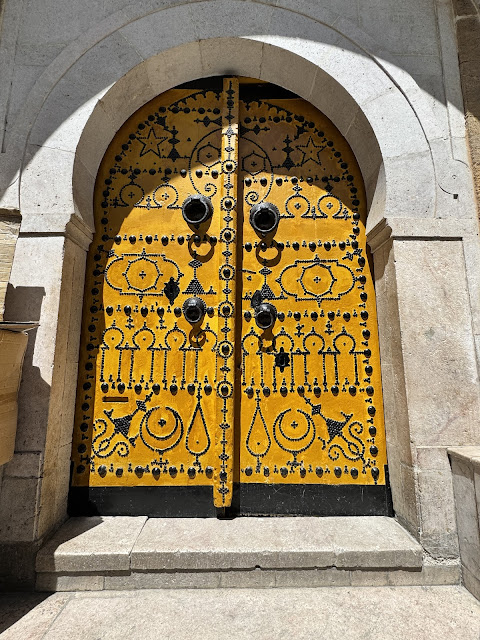




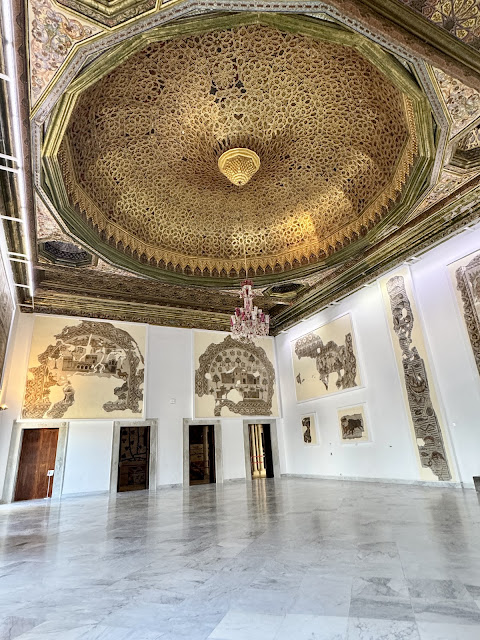


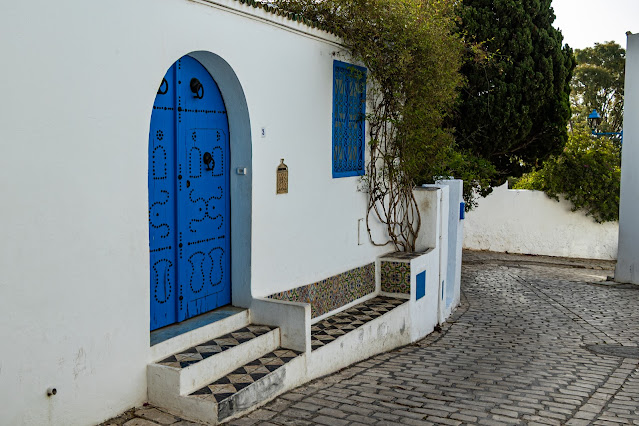





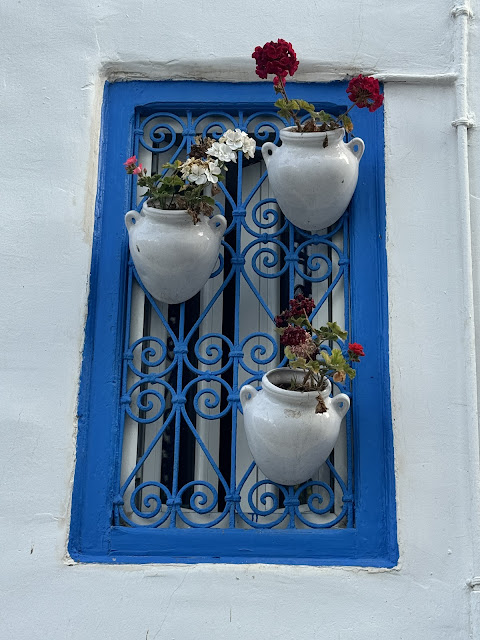


































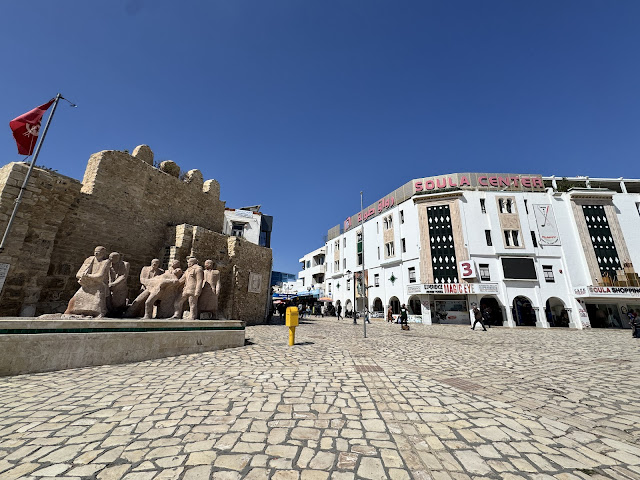

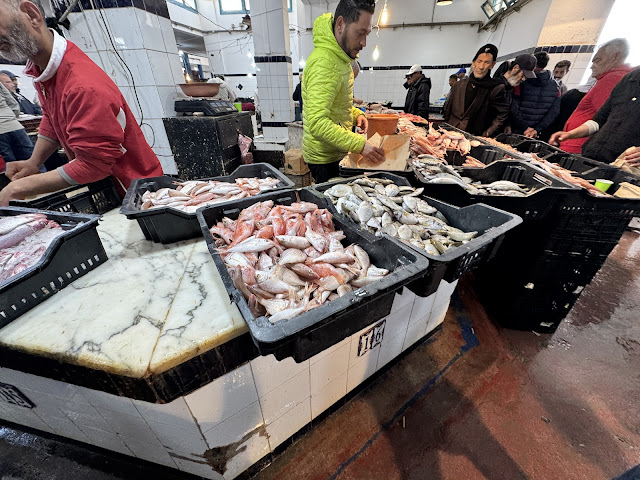




















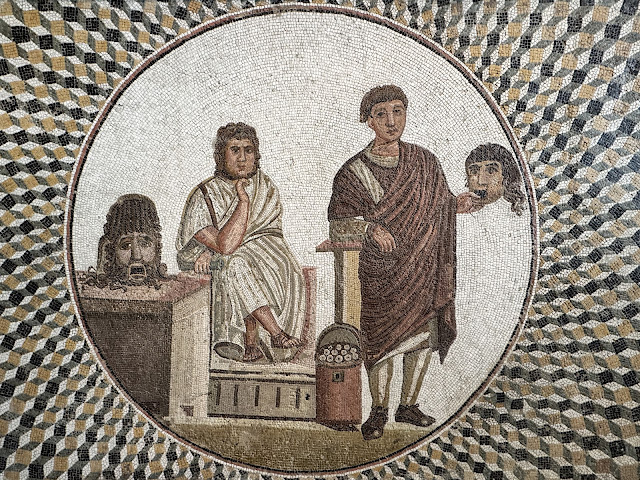
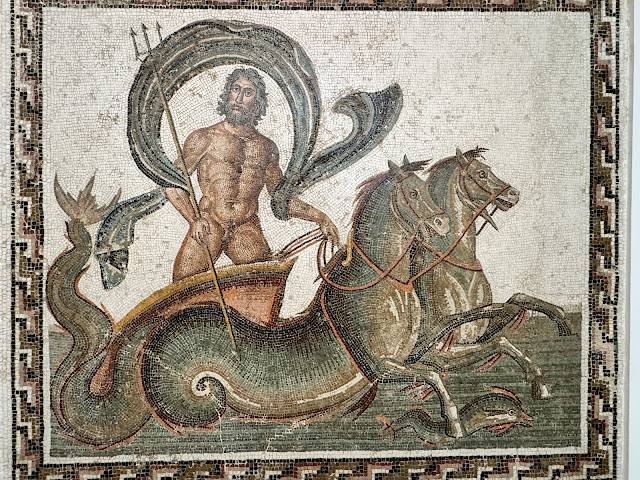












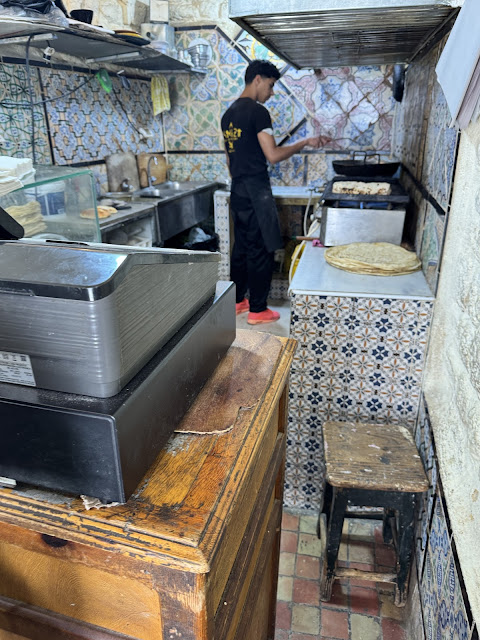

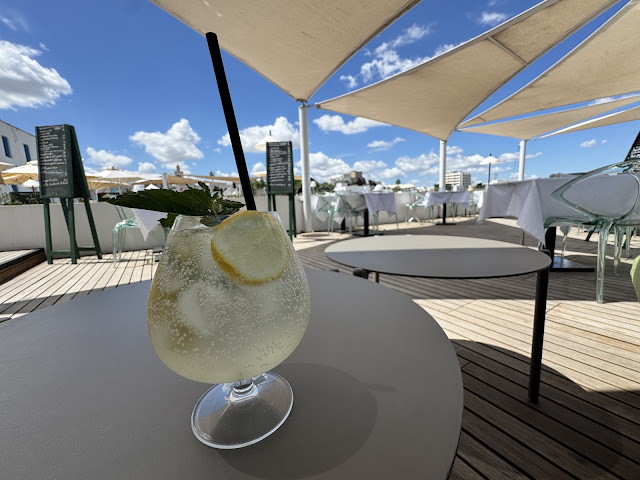


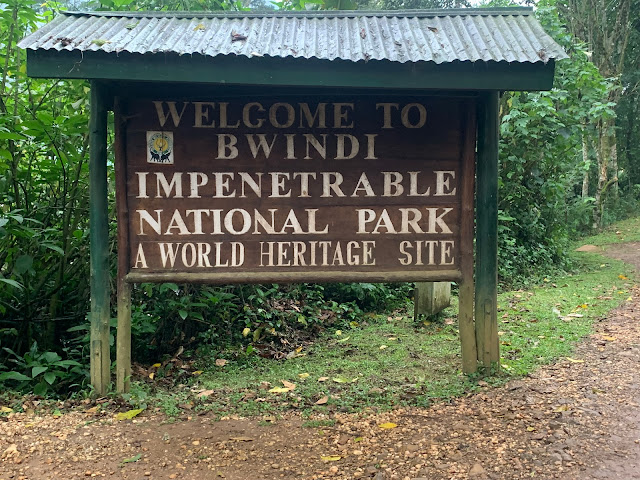





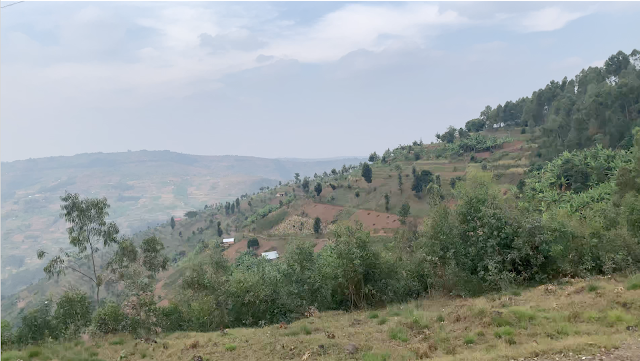
Comments
Post a Comment